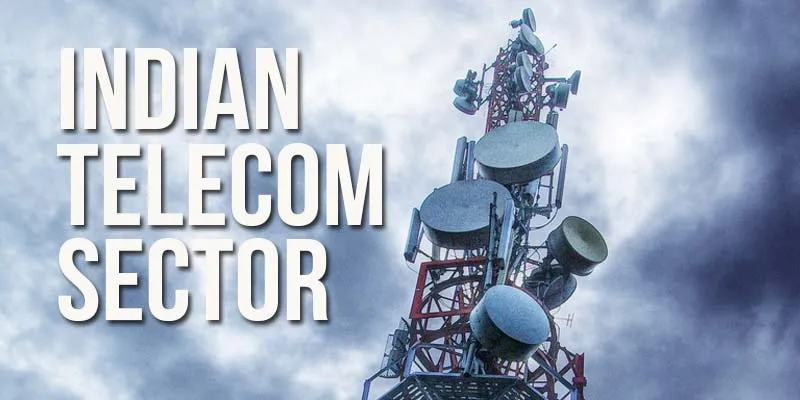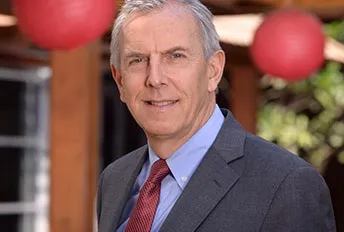What role do 900 million Indian mobile users play in India's future
90% of Indians access the Internet through mobile phones, while fixed line accounts for the remaining 10%. Indian telecom industry grew at a robust 9.2% in 2013-14, while our GDP witnessed a 4.7% growth rate. With the reducing inflationary pressure and the positive sentiments post elections, the telecom operators are looking forward to a stable pricing environment.
Telecom industry in India has come a long way from ‘Dhirubhai Ambani pioneer offer’ in 2003, which envisioned a mobile handset in every Indian household. Today, after 14 years, we have more mobile phones than toilets. While this captures the growth story of the industry well, there’s much more unknown about the sector and where it’s headed.
Eighteen years in a row, prices have dropped in the voice market. Vodafone India MD and CEO Martin Pieters came to India around the same time as Vodafone entered the country in 2007. Being there for almost seven years, he did a lot of justice to the story of telecom sector with his presentation at CeBIT India on “Telecoms as a key growth driver for a connected India.”
Here’s everything going on with telecom in India:

Also Read: 90 percent of world’s population will have a mobile phone by 2020
Growth and usage patterns
There are almost 900 million mobile phone users in India. In its last announced financial report, Vodafone claimed to have more than 173 million customers in India. With a 65% growth in revenues last year, data is clearly driving the industry. There are a total of 240 million data users in India divided between 55 million from urban areas and 185 million from rural parts of the country. A lot can be attributed to the surge in number of people entering the middle class. The same set of people is getting comfortable with online content consumption, social networking and e-commerce, which also presents a massive opportunity for enterprise businesses to flourish.
Mobile is not just a mode of communication, but used as a productivity tool. It has the capacity to be a connecting platform between the government and citizens as well. For example, a fisherman who was previously clueless about the sales and demand of his fishes can now call from the sea for this information, and knows well in advance where he needs to deliver the products to maximize profits.

The megatrendThere is an increased convergence of wireless and mobility as industry moves from connectivity to applications. In fact, it wouldn’t be wrong to say there’s an applications explosion in progress.
To support its network capabilities, Vodafone has laid 140,000 km of optical fibre cable in India. Globally, the telecom giant has the largest transmission network in the world, and has acquired many smaller companies in IoT (internet of things) domain. As pointed out by Vishal Sikka, CEO Infosys, earlier, IT and telecom are not only used for providing better services and improved interactions, today they are empowering citizens and making governments efficient.
Here are a few activities empowered by the telecom sector, which were not possible a few years ago:
- Banking: Vodafone has been managing banking for a leading bank in the country as a part of its Vodafone Business Services (VBS).
- Rural ATM connectivity: The telecom towers provide connection to rural ATMs located in the remotest areas.
- e-Governance/m-Governance: Telecom operators in India have partnered with the government to provide SMS and USSD solutions. Vodafone is empowering the ambitious AADHAR project. The industry also enables G2C (government to citizens), G2B (government to businesses) and G2G (government to government) interaction platforms.
Must Read: What does Vishal Sikka, the new CEO of Infosys thinks about startups and future of IT ?
The invaluable spectrum
While on one hand, the telecom industry in India is ready to play a crucial role in taking the country to the next level, on the other, there are some serious concerns pushing the plan backwards.
As compared to other countries, telecom companies have to operate in lesser bandwidth while they end up paying a lot in spectrum auctions. Vodafone Group’s CEO, Vittorio Colao, recently said,
The problem is that in India there is a misperception of the value of spectrum. The reserve prices are set too high. India has very low prices and very low revenues, so we cannot afford to pay high price for spectrum. We have told them [Indian government] a number of times that the order of magnitude that they have in mind just does not make sense.
As a result, companies are unable to invest in networks. Vodafone alone has invested an amount of INR 60,000 crores in India and paid taxes worth INR 70,000 crores to the Indian government in the last seven years. Martin Pieters, MD & CEO, Vodafone India, said,
It is not that the spectrum is not available -- Ministry of Defense has it, but the government is reluctant to make it available for auction and consumption.
With the current policies in place, the estimated growth of broadband users in India seems to be getting affected, and the target of having 650 million broadband connections by 2020 is also dwindling.
Digital India of 2020
The growth story of telecom sector in India is not taking place in isolation, but impacting many others fields as well. With the advent of new technologies, telecom is now enabling healthcare, education, financial inclusion and much more. Prime Minister Narendra Modi has already embarked upon the journey to put a digital roadmap to the growth story of the country. MyGov.in, MakeInIndia and Attendance.gov.in are the humble beginnings that will show the path to a bigger and better picture of digital India.

The digital India of 2020 paints a promising picture ahead of us. Here’s an idea of what role telecom will play in it:
- m-health: More than two-thirds of the Indian population stays in rural India where the malnutrition rate among infants is even higher than the national average of 44%. With a capacity crunch in the public healthcare system, patients have become dependent on private healthcare providers (India’s Healthcare systems report). Though the Indian government has announced an increase in its expenditure on healthcare from 1.1% of GDP to 2-3% of GDP in next four years, technology is catalyzing the process of reaching out to those without access to healthcare. Not only this, but mobiles are increasing the efficiency of existing processes (booking, handling records, etc) in hospitals.
- m-retail: India will add another 400 million broadband users and even more internet consumers in the next six years. Majority of the transactions (if not everything) will be on mobile sets and from the middle class. They are the targeted customers of e-commerce companies and getting more comfortable buying on mobile sets (and online shopping).
- Financial inclusion: Vodafone m-pesa and Airtel money have now crossed the pilot stages, and are operating across all states in the country. With over 2 million users, 80,000 outlets and a double digit MoM growth rate, m-pesa sets the tone for the future of mobile money in India. Some changes in RBI’s policies will give a boost to financial inclusion plans of the players in this space.
- e-learning : Remote areas are now getting access to courses from all across the globe through internet and mobile. The consumption of video content is witnessing a massive growth and is one of the major enablers in e-learning sector.
- Smart cities: Traffic management, platform for citizens’ grievances, etc can be incorporated in the coming years for which telecom companies can work with the city corporations.
Telecom industry is going to be a key driver for India’s economic growth. Its future will decide a lot about India’s digital dreams for 2020.
What do you think about digital India in 2020?







